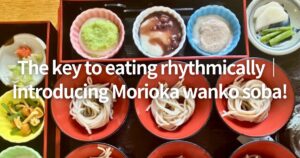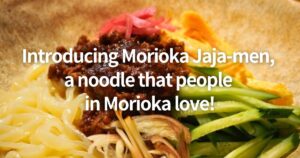Continuing from the previous issue, this is another installment of the Fukuoka Udon series.
Fukuoka is famous for its unique udon culture, which can be enjoyed with different toppings and side dishes from other regions.
Specifically, there are toppings such as gobo-ten (burdock root tempura) and maruten (round tempura), which are rarely seen in other regions, and some restaurants prepare udon broth in a kettle.
When I first saw the kettle, I mistakenly thought it was tea.
The side dishes that accompany udon are also unique, such as kashiwa-meshi and botamochi, and each restaurant has its own originality, which is very enjoyable.
So, in this article, I will explain the charm of unknown toppings and side dishes of Fukuoka udon, as well as recommended stores, with some of my own experiences.
I hope you will be inspired to take an interest in Fukuoka udon.
Why did the Fukuoka udon culture develop uniquely in the first place?
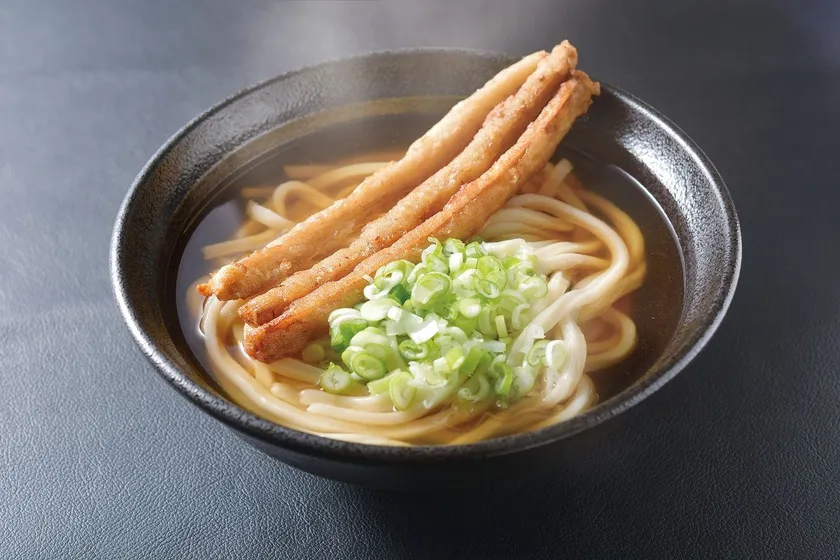

Fukuoka’s udon has several unique toppings and sides that are not found in other areas.
Let’s unravel the mystery behind these items and the reasons for their popularity, focusing on each item individually.
Why is burdock tempura a popular topping in Fukuoka udon?
It is believed that gobo-ten udon originated at “Otchan Udon” in Tenjin, Hakata during the late Meiji and early Showa periods.
The store offered udon topped with fried gobo-ten (burdock tempura), which was accepted locally for its crunchiness and nourishing qualities, and became a standard udon topping.
The contrast between the soft noodles of Fukuoka and the savory flavor and texture of the burdock tempura is a perfect match, making it a uniquely popular dish not found in other prefectures.
Another reason is that Kyushu is also a burdock producing region, and burdocks have become a familiar foodstuff.
Why is Maruten (fish cake) a popular topping in Fukuoka udon?
Maruten is tempura made by forming fish paste into a round shape and deep frying it. In Hakata, tempura also refers to fish paste.
Characterized by its round shape to fit in a rice bowl, it is similar to satsuma-age, but has taken root in Hakata’s unique food culture.
Taking advantage of Hakata’s abundance of seafood, it has become popular as an easy and hearty topping.
The combination of the udon’s gentle broth and the maruten (round tempura), which melts out the flavor of the fish, is a taste unique to Fukuoka udon.
Why is Kashiwa-meshi popular as a set meal at Fukuoka Udon?
Kashiwa-meshi is rice cooked with chicken (called “kashiwa” in Hakata) and vegetables in soy sauce or mirin.
It is an essential local dish for festivals, events, and gatherings in Fukuoka, and is also a standard side dish at udon restaurants.
The gentle flavor of udon goes perfectly with kashiwa rice soaked with the flavor of chicken, and many people order it as a set.
The seasoning differs from home to home and from store to store, making this dish nostalgic and familiar to locals.
These items are closely linked to Fukuoka’s food ingredients and lifestyle culture, symbolizing the uniqueness of the udon culture.
Indeed. I took it for granted that they had burdock root tempura, so I was shocked when I walked into an udon restaurant when I first moved to Tokyo and there was no burdock root tempura…
Three Attractions of the Uniquely Developed Fukuoka Udon Culture
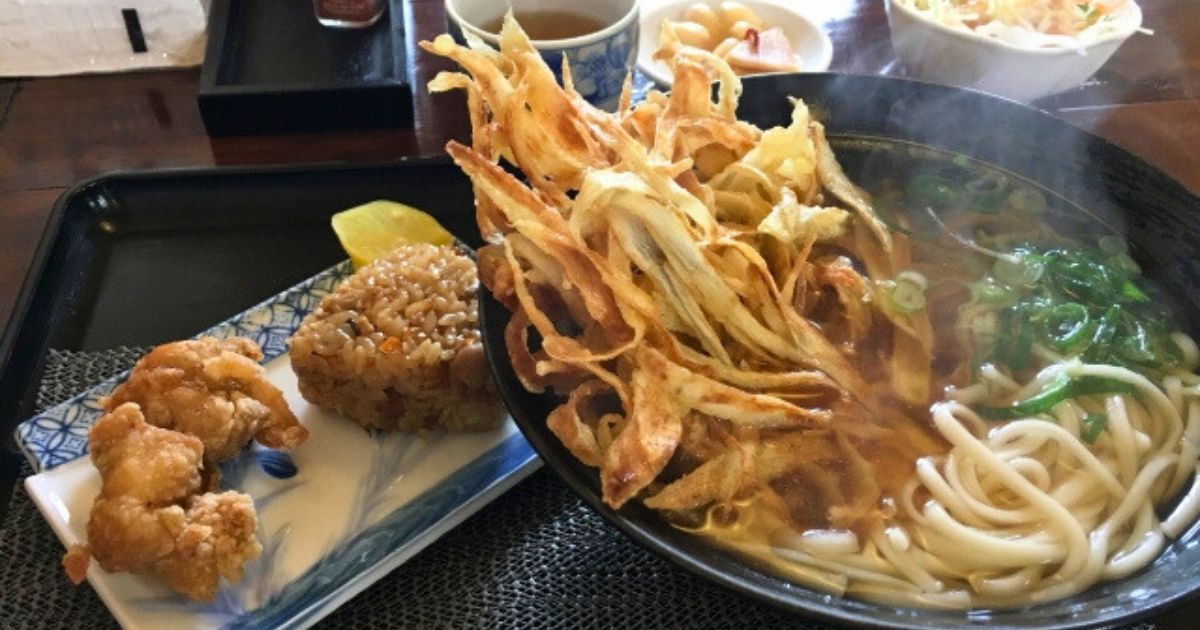

I have summarized some of the attractions of the uniquely developed Fukuoka udon culture that I feel are unique.
Soft noodles and unique texture
The greatest feature of Fukuoka udon is its soft, glutinous noodles with almost no firmness.
This is due to the fact that in the merchant town of Hakata, pre-boiled noodles became popular so that busy people could quickly finish their meals.
Its unique texture, which is soft to the palate and allows you to enjoy a sense of unity with the broth, sets it apart from udon noodles from other prefectures.
Light and elegant broth
Fukuoka udon broth is characterized by its clear, golden color and light flavor, based on seafood such as kombu (kelp), iriko (dried sardines) and bonito flakes, and finished with light soy sauce and mirin (sweet sake).
The delicate flavor of the ingredients makes you want to drink it all the way through, and it goes perfectly with the soft noodles.
Abundant and unique toppings
A variety of toppings unique to Fukuoka, such as gobo-ten (burdock root tempura), maruten (round tempura), and niku udon (meat udon), are attractive.
Each restaurant adds its own unique twist, making use of locally grown ingredients.
The fun of customizing it to your own taste and combining it with side dishes such as kashiwa-meshi (rice with kashiwa seaweed) are also major attractions of Fukuoka’s udon culture.
I often see noodles with firm texture, but I don’t hear much about the soft noodles for which they are famous, except for Fukuoka udon, which gives me the impression that they are rare.
My recommended Fukuoka udon toppings & sides and 3 stores I recommend
I will introduce recommended toppings and sides that adorn Fukuoka udon, as well as hole-in-the-wall stores.
My recommended Fukuoka udon toppings & side menu
My recommended Fukuoka udon toppings & side menu
Burdock root


✅ Recommended Points
- Gobo-ten, a classic topping of Fukuoka udon, is literally deep-fried burdock root tempura.
- The crunchy texture is exquisite and contrasts well with the soft noodles.
- It was first created in Hakata in the late Meiji period (1868-1912) and became popular due to the use of locally grown burdocks.
- It is rich in nutrients and its savory flavor is enhanced when combined with udon’s light broth.
✅ Recommended stores
- Hagakure Udon
- This long-established udon store, established in 1985, is a 12-minute walk from Hakata Station.
- The handmade noodles are chewy and chewy thanks to the foot-pounding method, and the golden ratio of bonito flakes and umewashi (Japanese sardine) broth (2:1) harmonizes with the soft noodles.
- From 300 yen for kake udon, a variety of homemade toppings such as gobo-ten (burdock root tempura) and kakiage (shrimp tempura) are available.
- Listed on the Michelin Bib Gourmand list, the restaurant is always full at lunchtime.
- Also open at night and popular with tourists.
Maruten


✅ Recommended Points
- Maruten, made by forming fish paste into a round shape and deep frying it, is a symbol of Hakata’s unique fish paste culture.
- It is characterized by its fluffy texture and the sweetness of the fish that spreads as you bite into it.
- The round shape makes it easy to fit in a bowl of udon, and it can be enjoyed while dipping it in udon sauce.
- It has a history of utilizing local fresh fish and is popular for its easy protein supply.


✅ Recommended stores
- Maruten Udon Specialty Restaurant Manpei
- This long-established restaurant moved to Yakuin Odori Ekimae (former Folio Hakata Store) in July 2024.
- It is characterized by its white broth made using kaiseki cuisine techniques and “mochi mochi (sticky) flat noodles” cooked in a pressure cooker.
- The handmade soft and fluffy tempura, which is deep-fried to order, is available in more than 10 varieties, including green perilla, yam, shrimp, and others.
- Udon and mini rice bowl set (around 1,000 yen) is available for lunch, and a course meal using white broth (6,000 yen) is offered at night.
- Comes with a small bowl of cooked food, which the owner, a former itamae (chef), uses his Japanese cooking skills.
Kashiwa-meshi
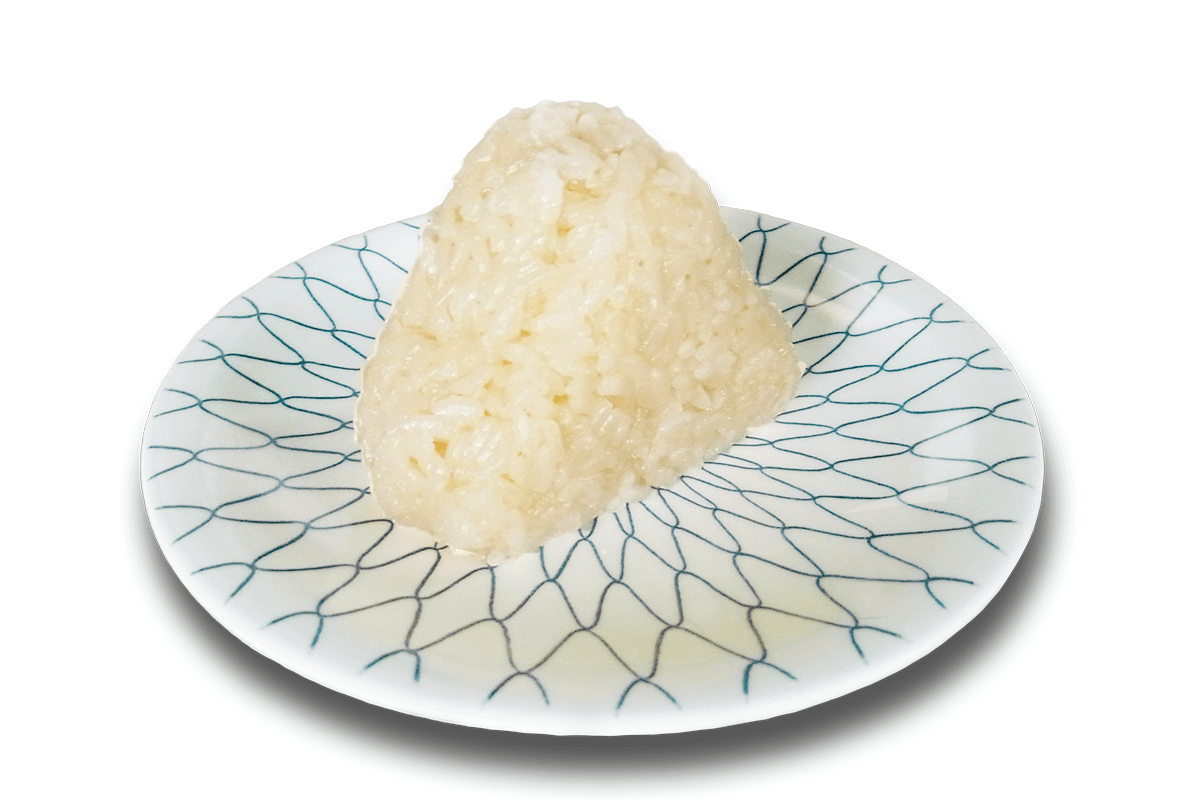

✅ Recommended Points
- Kashiwameshi, chicken cooked in a soy sauce base, is a standard set menu item with udon.
- The rice soaked with the flavor of chicken is the perfect “shime” after a bowl of light udon noodles.
- In Fukuoka, “kashiwa” is a dialect word for chicken, and has a long history of being enjoyed at festivals and as a home-style dish.
- The appeal of this dish is that you can enjoy the differences in seasoning at each restaurant.
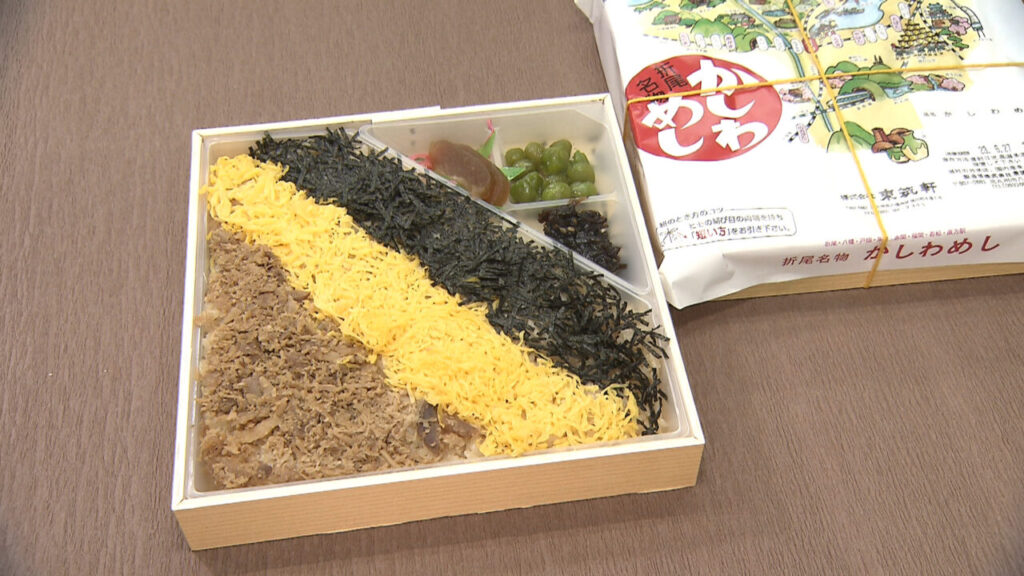

✅ Recommended stores
- Tochikuken
- This long-established store originated in Orio, Kitakyushu City and was established in 1921.
- Kashiwameshi” cooked in chicken broth is its signature product, and the secret recipe has been handed down only by the female owner of the shop.
- The frozen version retains the texture with the latest technology, and will be renewed with rice with barley in March 2025.
- It has been ranked No. 1 in JR Kyushu’s “good ekiben” in an ekiben survey, and also offers udon noodles with gobo-ten (burdock root tempura) and maruten (round tempura).
- Kashiwa-meshi is known for the flavor of its rice rather than its chicken, and is certified as a “food brand” by Kitakyushu City.
The kashiwa-meshi bento is good, but I prefer the simple rice ball eaten with udon.
Column: Aren’t gomoku gohan and kashiwameshi the same?


Kashiwameshi is a local dish of Fukuoka, consisting of chicken cooked in soy sauce-based broth and mixed with burdock root, carrots, and shiitake mushrooms.
The flavor of the chicken is the main ingredient, and it is characterized by “mixing” the ingredients into the rice.
On the other hand, gomoku gohan is the Kanto term for rice cooked with a variety of ingredients such as chicken, seafood, and vegetables.
Kashiwameshi is unique in that it specializes in chicken and maintains its sticky texture even when cold.
Wow. I didn’t know there was a difference between kashiwameshi, which is mixed, and gomoku gohan, which is cooked.
How to enjoy the unique Fukuoka udon culture for foreigners visiting Japan
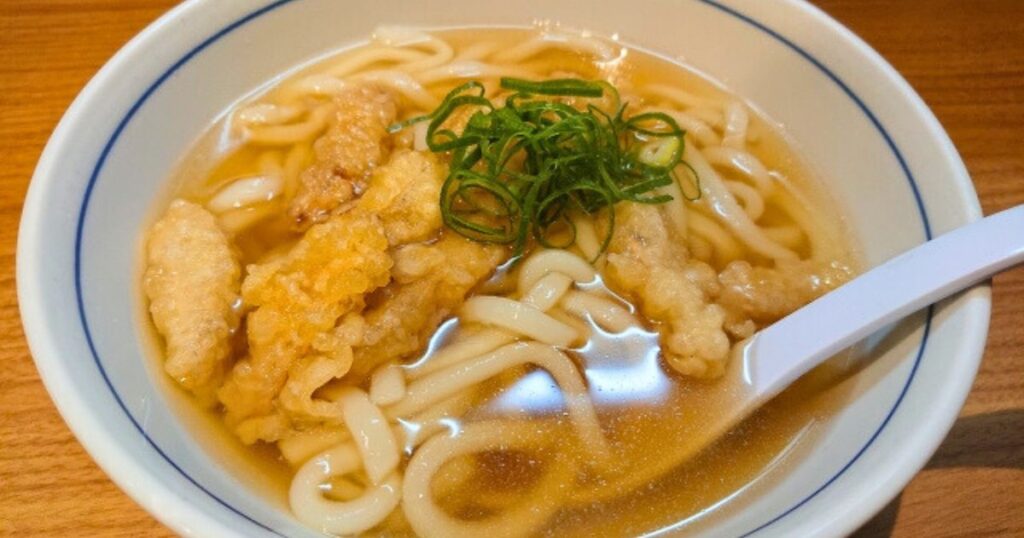

To enjoy Fthe unique Fukuoka udon culture to its fullest, try these tips:
✅ Combination of chewy noodles and infinitely refreshing dashi
The greatest feature of Fukuoka udon, The greatest feature of Fukuoka udon is the “soft and chewy noodle” born from the culture of leaving the noodles to boil.
The noodles become soft and chewy with time as they absorb the broth, and the kettle on the table allows you to add more broth as you like.
The noodles can be enjoyed in two stages, first with a smooth texture, and then with a more deliberate taste.
The clear broth, made from a golden ratio of kombu, bonito, and iriko, is so mellow that you will want to drink it all up.
✅ Customized culture of free choice of toppings
A wide variety of toppings using local ingredients such as gobo-ten (burdock root tempura) and maruten (deep-fried fish paste) are available.
Tenkasu (dregs of heavenly fish), yuzu pepper, and yam kelp can be added by self-serve and arranged to your liking.
Udonjime,” a combination of udon noodles with a hearty portion of gobo-ten (meat and burdock root tempura) or with izakaya (Japanese-style pub) menu items (such as motsunabe) at night, is also popular.
✅ Kashiwa-meshi set completes the Fukuoka style
Kashiwa-meshi rice soaked with the flavor of chicken is a standard side dish.
The contrast in flavor between the light udon and the rich takikomi gohan is exquisite.
Long-established restaurants such as Tosikuken offer a secret recipe that has been handed down for more than 100 years, and is characterized by the fact that the sticky texture remains even after the noodles have cooled.
Locals are familiar with the seemingly unexpected combination of “udon + rice” on a daily basis.
The Kashiwameshi set is certainly very satisfying, filling both the stomach and the heart.
You can easily taste Fukuoka udon at home!
Authentic Fukuoka udon is hard to find outside of Fukuoka, such as in Tokyo, but you can purchase it from Amazon from the comfort of your own home.
In this article, I would like to introduce some of my recommended Fukuoka udon that can be purchased on Amazon.
I think you will find that they have a different taste from the three major chain restaurants in Fukuoka.
Please use them as a reference for your favorite Fukuoka udon.
If you are interested, check out the following products on Amazon!








Fukuoka udon is still very deep, so if you are interested, please come visit us in Fukuoka.





